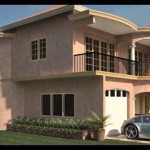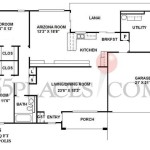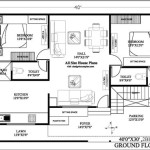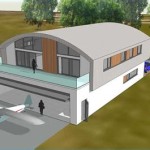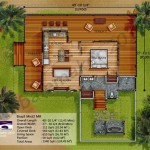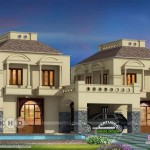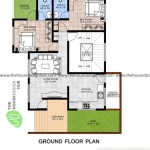Tree House Ideas and Plans: A Comprehensive Guide to Elevated Havens
The construction of a tree house represents a unique blend of architectural creativity and a profound connection with nature. Unlike conventional structures anchored to the ground, a tree house relies on the living strength and stability of a tree, or multiple trees, for its support. Designing and building a tree house requires a careful consideration of various factors, including tree health, structural integrity, safety regulations, and the desired functionality of the elevated space. This article will explore diverse tree house ideas and plans, offering insights into the planning and execution of these enchanting constructions.
Tree Selection and Assessment
The success of a tree house project hinges significantly on the selection of a suitable tree or trees. Not all trees are created equal in terms of their capacity to bear the weight and stress associated with a human-occupied structure. Mature, healthy trees with robust trunks and well-established root systems are paramount. Ideal species often include oak, maple, fir, and beech, known for their strength and longevity.
Before commencing any design or construction work, a thorough assessment of the chosen tree's health and structural integrity is essential. This assessment should ideally be conducted by a qualified arborist. The arborist can identify any signs of disease, decay, or structural weaknesses that could compromise the tree's ability to support the tree house. Specific indicators to watch for include fungal growth, cavities in the trunk or branches, excessive deadwood, and signs of insect infestation. The arborist can also offer guidance on pruning strategies to enhance the tree's health and structural stability.
Furthermore, the branching pattern of the tree is a crucial consideration. Trees with well-spaced, sturdy branches that form a natural platform are ideal. The angle and orientation of the branches will influence the design and placement of the tree house platform. Ideally, the selected branches should be relatively horizontal and capable of distributing the load evenly. Avoid trees with branches that are too close together, as this can restrict growth and create unnecessary stress points.
The long-term growth potential of the tree must also be taken into account. As the tree grows, the tree house structure will need to accommodate its expansion. This can be achieved through the use of flexible attachment methods that allow the tree to move and grow independently of the tree house platform. Regular monitoring of the tree's growth and adjustments to the attachment system may be necessary over time.
Design Considerations and Structural Planning
Once a suitable tree or trees have been identified and assessed, the next step involves developing a comprehensive design plan for the tree house. This plan should encompass not only the aesthetic aspects of the structure but also the crucial structural engineering elements that ensure its safety and stability. The size and shape of the tree house will be dictated by the available space within the tree canopy, the desired functionality of the structure, and the load-bearing capacity of the supporting trees.
Several design styles can be considered, ranging from simple platforms to elaborate, multi-room structures. A basic platform tree house offers a minimalist approach, providing a simple elevated space for relaxation and observation. More complex designs may incorporate walls, roofs, windows, and doors, creating a fully enclosed and weatherproof sanctuary. The choice of design will depend on the intended use of the tree house and the budget available.
Structural integrity is paramount in tree house construction. The design must account for the weight of the structure, the anticipated occupancy load, and potential environmental factors such as wind and snow. The platform’s support system is a critical element. Several attachment methods can be employed, including bolts, cables, and friction-based systems. Each method has its advantages and disadvantages in terms of load distribution, tree impact, and ease of installation.
Garnier Limbs (GLs) are a popular and relatively tree-friendly attachment method. They involve drilling a hole through the tree and inserting a large bolt or rod that supports a bracket connected to the platform. GLs distribute the load over a larger area of the tree, reducing stress concentration. Cables can be used to suspend the platform from branches, allowing for movement and growth. Friction-based systems rely on clamps or straps that grip the tree without penetrating the bark. These systems are less invasive but may have lower load-bearing capacities.
The choice of materials is also a significant design consideration. Lightweight yet durable materials such as cedar, redwood, and pressure-treated lumber are commonly used. These materials are resistant to decay and insect infestation, ensuring the longevity of the structure. The use of composite materials and recycled plastics can also be considered for their environmental benefits and durability.
Building codes and safety regulations should be carefully reviewed and adhered to during the design and construction process. Many municipalities have specific requirements for tree houses, including maximum height restrictions, setback requirements, and safety features such as railings and escape routes. Consulting with a local building inspector is highly recommended to ensure compliance.
Essential Safety Considerations and Construction Techniques
Safety is of utmost importance in tree house construction. The elevated nature of the structure presents inherent risks, and careful planning and execution are essential to mitigate those risks. A comprehensive safety plan should address all aspects of the construction process and the eventual use of the tree house.
During construction, appropriate personal protective equipment (PPE) should be worn at all times. This includes hard hats, safety glasses, gloves, and sturdy footwear. Fall protection equipment, such as harnesses and lanyards, is crucial when working at heights. A well-stocked first-aid kit should be readily available, and workers should be trained in basic first aid procedures.
Safe access to the tree house is a primary concern. Several options are available, including ladders, stairs, ramps, and rope bridges. Ladders should be securely anchored and constructed of sturdy materials with non-slip rungs. Stairs offer a more gradual and comfortable ascent, but they require more space and may be more complex to build. Ramps provide accessibility for individuals with mobility limitations. Rope bridges offer a fun and adventurous option, but they should be carefully designed and constructed to ensure stability and safety.
Railings and guardrails are essential safety features for preventing falls. They should be installed around the perimeter of the platform and along any elevated walkways or stairs. The height and spacing of the railings should comply with local building codes and safety standards. The use of netting or mesh can provide an additional layer of protection, particularly for young children.
Emergency escape routes should be incorporated into the design. A secondary means of egress, such as a rope ladder or a slide, can provide a quick and safe way to descend from the tree house in the event of an emergency. This is particularly important for tree houses that are located at a significant height above the ground.
Regular maintenance and inspections are crucial for ensuring the long-term safety and stability of the tree house. The structure should be inspected periodically for signs of wear and tear, damage from weather or pests, and any loosening of the attachment points. Pruning of the tree may be necessary to prevent branches from rubbing against the tree house or obstructing access.
Electrical wiring and plumbing should be installed by qualified professionals to ensure compliance with safety codes and prevent electrical hazards or water leaks. The use of ground fault circuit interrupters (GFCIs) is essential for protecting against electrical shock. Plumbing should be properly insulated to prevent freezing in cold weather.
Fire safety is another important consideration. Smoke detectors and fire extinguishers should be installed in the tree house, and occupants should be familiar with their operation. A fire escape plan should be developed and practiced regularly. The use of fire-resistant materials in the construction of the tree house can also help to minimize the risk of fire damage.
By carefully considering these safety considerations and construction techniques, a tree house can be transformed into a safe and enjoyable elevated haven for people of all ages.
Creative Tree House Ideas and Themes
Beyond the structural and safety aspects, the design of a tree house offers ample opportunities for creative expression. The theme and decor can be tailored to reflect the interests and preferences of the occupants, creating a unique and personalized space. Numerous design ideas and themes can be incorporated into a tree house project, ranging from rustic retreats to whimsical fantasy structures.
A rustic cabin theme can evoke a sense of warmth and comfort. This can be achieved through the use of natural materials such as wood, stone, and burlap. The interior can be furnished with cozy seating, warm lighting, and decorative elements such as antlers, woven baskets, and vintage photographs. A wood-burning stove can provide heat and ambiance during colder months.
A pirate ship theme can transform a tree house into an adventurous play space for children. The structure can be designed to resemble the deck of a ship, with features such as masts, sails, and a crow's nest. The interior can be decorated with nautical flags, treasure chests, and pirate maps. A rope ladder or a slide can provide a fun way to access the tree house.
A fairy tale cottage theme can create a magical and enchanting retreat. The tree house can be designed to resemble a quaint cottage, with features such as a thatched roof, whimsical windows, and flower boxes. The interior can be decorated with pastel colors, delicate fabrics, and fairy lights. Miniature furniture and accessories can add to the charm of the space.
An eco-friendly tree house can be designed with sustainability in mind. This can be achieved through the use of recycled materials, solar panels, and rainwater harvesting systems. The tree house can be insulated with natural materials such as sheep's wool or recycled denim. Planting trees and shrubs around the base of the tree house can help to integrate it into the natural environment.
A meditative retreat can provide a peaceful and serene escape from the stresses of everyday life. The tree house can be designed with minimalist decor, soft lighting, and comfortable seating. Large windows can offer panoramic views of the surrounding landscape. Features such as a meditation cushion, a yoga mat, and a calming water feature can enhance the sense of tranquility.
A reading nook can create a cozy and inviting space for book lovers. The tree house can be designed with comfortable seating, ample lighting, and plenty of bookshelf space. A window seat with a view can provide a perfect spot for curling up with a good book. Decorative elements such as bookends, reading lamps, and literary posters can add to the ambiance of the space.
The possibilities for tree house themes and designs are virtually limitless. By carefully considering the interests and preferences of the occupants, a tree house can be transformed into a truly unique and personalized space.

House Plans Tree Kids Designs

Treehouse Plans Custom Tree House Design By Expert Builders Supplies

Open Plan Room In Treehouse Plumis

The Urban Treehouse Tree House Designs Floor Plans Home Design

Technical Drawing Treehouse Plans Tree House Designs

Pete Nelson S Treehouse Designs For Diy Ers

Peach Tree House Plan Ranch Floor Designs

20240328 Bt Treehouse Layout Infographic Tree House Diy Plans

Cool Tree House Plans Learn How To Build A

Modern Tree Living Creative Treehouse Designs Plans Ideas On Dornob


